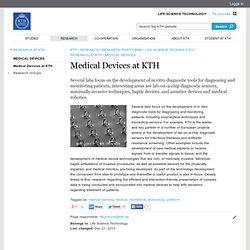

Research & Development. Glassomics. IntendiX Brain-Computer Interface Might Be Available Soon. An Early Blood Test for Autism Shows Promise: Interview with Sek Won Kong, MD. 2inShare Approximately 11 out of every 1,000 US children are diagnosed with Autism Spectrum Disorders (ASD) annually, according to the CDC.

While autism is usually diagnosed clinically, genetic evaluations have been thought to have potential in aiding definitive and early diagnosis of autism. Such early diagnosis is essential because pharmacologic and non-pharmacologic interventions made when children are younger have been shown to lead to positive effects on habilitative progress, functional outcome, and quality of life.
Since imaging may be costly and ineffective, and a brain biopsy is infeasible, developing a sensitive blood-based genetic test has been an example of a major effort on this front. Recently, a team of researchers at Boston Children’s Hospital, led by Sek Won Kong MD, conducted the largest blood transcriptome study to date to evaluate the utility of gene expression profiling as a tool to aid in the diagnosis of ASD.
According to Dr. We had a chance to speak with Dr. Dr. TEDGlobal: Future vaccines could be delivered via patch. 13 June 2013Last updated at 07:09 ET By Jane Wakefield Technology reporter, TEDGlobal, Edinburgh The Nanopatch contains an array of thousands of vaccine-coated projections that perforate the skin A skin patch that can deliver vaccines cheaply and effectively has been shown off at the TEDGlobal conference in Edinburgh.

Using a patch rather than a needle could transform disease prevention around the world, said its inventor. Prof Mark Kendall said the new method offered hope of usable vaccines for diseases such as malaria. Other medical experts welcomed the news, but warned it might be unsuitable for some patients. Old technology It was fitting that Prof Kendall delivered his talk in Edinburgh where, 160 years previously, Alexander Wood had lodged the first patent for the needle and syringe.
"The patent looked almost identical to the needles we use today. It is also one that, alongside clean water and sanitation, has played a key role in ensuring longer lifespans around the world. Vaccine failure. Product Overview. Medical Devices at KTH. Several labs focus on the development of in vitro diagnostic tools for diagnosing and monitoring patients, interesting areas are lab-on-a-chip diagnostic sensors, minimally invasive techniques, haptic devices, and assistive devices and medical robotics.

Several labs focus on the development of in vitro diagnostic tools for diagnosing and monitoring patients, including bioanalytical techniques and biomedical sensors. For example, KTH is the leader and key partner in a number of European projects aiming at the development of lab-on-a-chip diagnostic sensors for infectious diseases and antibiotic resistance screening. Other examples include the development of new medical implants to receive signals from or transfer signals to tissue, and the development of medical device technologies that are non- or minimally invasive.
Moreover, haptic simulations of invasive procedures, as well as assistive devices for the physically impaired, and medical robotics, are being developed. This breathalyzer reveals signs of disease (w/ Video) (Phys.org) -- This invention could give new meaning to the term "bad breath!

" It's the Single Breath Disease Diagnostics Breathalyzer, and when you blow into it, you get tested for a biomarker—a sign of disease. As amazing as that sounds, the process is actually very simple thanks to ceramics nanotechnology. All it takes is a single exhale. You blow into a small valve attached to a box that is about half the size of your typical shoebox and weighs less than one pound. Once you blow into it, the lights on top of the box will give you an instant readout. With support from the National Science Foundation (NSF), Professor Perena Gouma and her team at Stony Brook University in New York developed a sensor chip that you might say is the "brain" of the breathalyzer. The manufacturing process that creates the single crystal nanowires is called "electrospinning.
" Gouma also says the nanowires can be rigged to detect infectious viruses and microbes like Salmonella, E. coli or even anthrax. Analytical Chemistry News - Chemistry News.